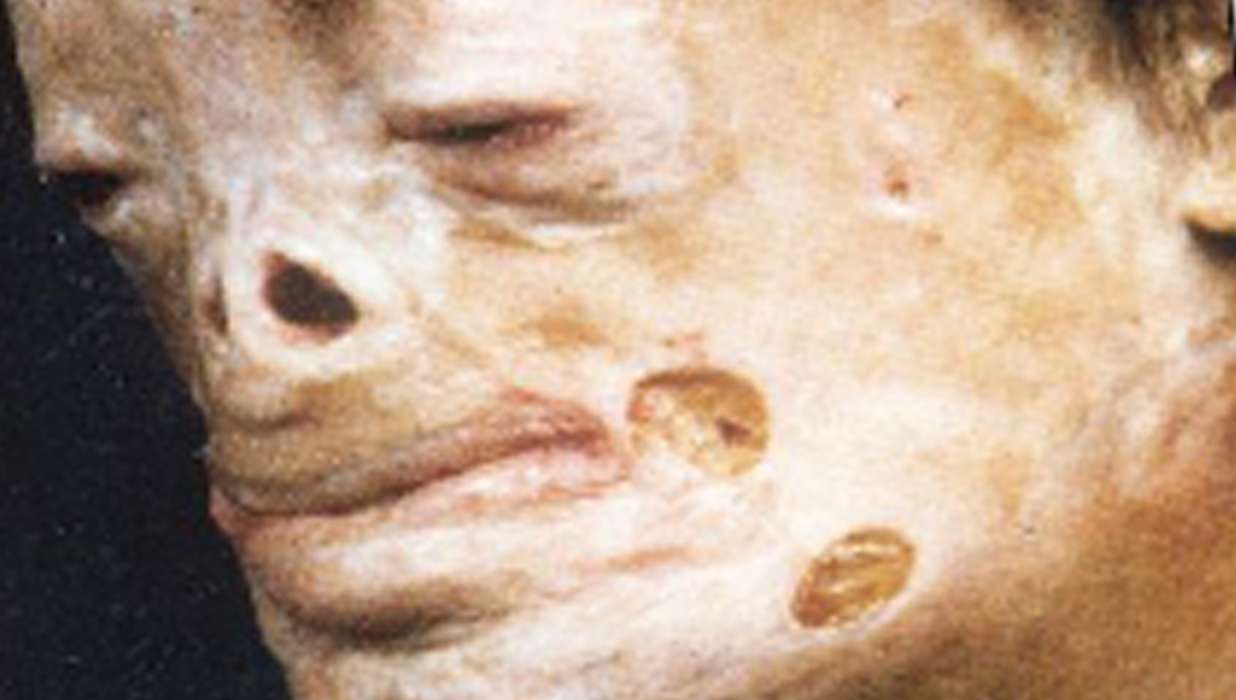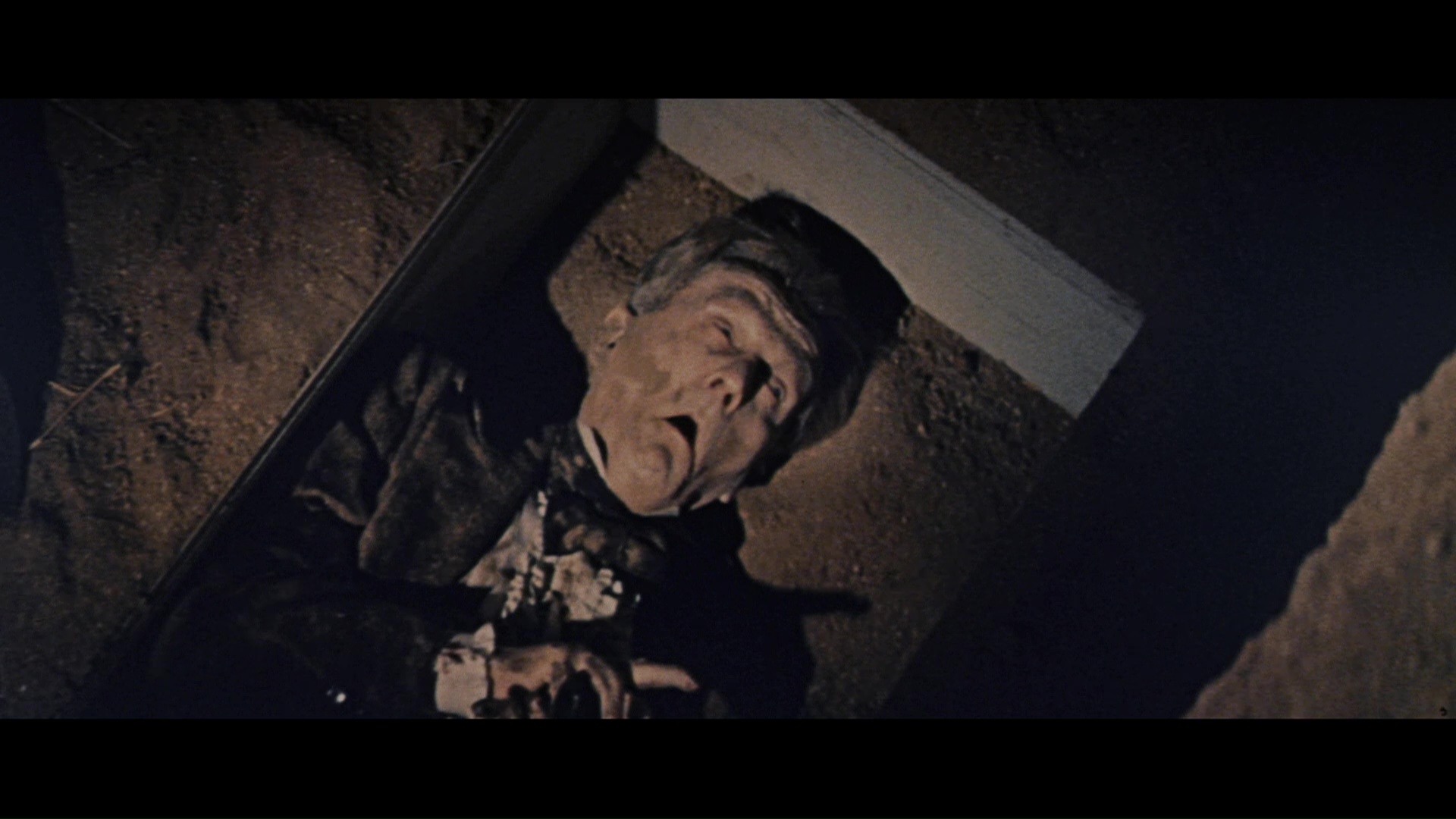Copyright 2020 by Gary L. Pullman
In
The Annotated Poe, the
observation is made that Edgar Allan Poe's work has suggested
storytelling techniques that filmmakers have adopted in dramatizing
their scripts:
.
. . his influence in the history
of cinema has been profound. He has since the early days of
motion pictures provided filmmakers with subjects, while influencing
the development of cinematic theory and technique (21).
For
example, Poe “anticipates the technique of cinematic montage,
in which brief shots are joined together to form a sequence that
compresses space, time, and information” in order to accelerate
“the action of the story, propelling readers towards its climax”
(43).
In
addition, Poe pioneered the narrative equivalent of alternating
close-up shots, distance shots, and extreme close-ups combined with
sound effects:
Poe
depicts Metzengerstein
in close-up (the “agony of his countenance'”, pulls back to show
him from a distance (“the convulsive struggling of his frame”),
and then supplies an extreme close-up (“his lacerated lips, which
were bitten through and through”). The rapid shifting of the images
quickens the narrative pace, which the ensuing cacophony of sound—the
shriek of Metzengerstein, the clatter of hooves, the roar of the
flames, and the shriek of the wind—further intensifies, thus
providing a running start for the horse's final bound up the stairs”
(34).
There's
no reason that the cinema shouldn't return the favor, as short story
writers and novelists adopt some of the camera
angles that directors and cameramen (and women) have found most
effective in filming horror movies.
In
doing so, the writer simply adopts the strategy of using description
to depict in words what the camera would show in images. In writing,
the writer is also the director and the cameraman (or woman); the
writer, therefore, calls the shots.
Here
are a few examples. (In the descriptions, specific references to
characters and situations have been deliberately eliminated in the
interests of describing more generic scenes. The video clips are more
specific, suggesting how particular writers, actors, directors, and
other filmmaking crew members have depicted such situations.)
The
extreme closeup is called for when “specific facial
expressions” indicate that action “that might scare . . . a
character” is about to occur or “has happened.”
Here's
the same scene, from Stanley Kubrick's The Shining (1980),
captured in the “camera” of descriptive writing:
Behind
him, above the immense fireplace and its burning log, a mural of
stylized girls in triangular skirts adorns the wall. To the left, Art
Deco windows are set in the wall, beneath a mounted moose head; a
table; chairs; twin candles in matching wall sconces. But decorative
features are indistinct, pale, ghostly images, suggestions, more than
realities. One's gaze is drawn to and fixated upon him.
His high forehead, his winged eyebrows, his staring eyes, his parted
lips command absolute attention, allegiance, devotion, as does his
stance, exuding confidence and power. As I approach, his features
remain the same; he does not blink, does not stir, does not change.
Nearer still, and his eyes, his gaze, without altering, expresses, in
its stillness and intensity, in its indomitable and unchanging will,
in its immutable and insistent being,
a demonic essence, at once both terrifying and mesmerizing,
inescapable and compelling.
A
point-of-view shot captures a
character's own visual experience, showing what he or she would see
in a particular situation, letting the reader view the scene as
character sees the action.
The
opening scene of John Carpenter's Halloween (1978):
Movement,
a march, a cadence measured and purposeful, past a jack-o-lantern
flickering from the fire inside; past dark foliage shapes; past the
shadows of leaves upon a wall white in the darkness, to a scene
framed by a window: inside a teens locked in an embrace kiss,
frantic, until they hear a sound; they break, listening. Then, they
run upstairs, excited. Movement, march, cadence, in reverse, back
past the leaf-shadows, the dark foliage shapes, the fiery carved
pumpkin, to the front yard. Up. The second-story window is
illuminated, then dark. Around, through the darkness, to the door
through the windows of which shows the kitchen. Enter. Light. Stove.
Sink. Open a drawer, remove a knife, huge and sharp of edge and
point. Dining room: table, candles, chairs, sideboard, shadow of a
chandelier upon a wall. Hallway. Living room: television, rocking
chair, sofa, pole lamp. A staircase, leading up. The teenage boy,
walking downstairs, exits the front door, closing it behind him. Up
the stairs, past a painting, framed and hanging on the wall, into the
darkness. Cast-off clothing on the floor: jacket, bra, panties. The
corner of a chair. Through a doorway, she sits, naked, the teenage
girl, running a brush through her hair. Behind her, the bedding is in
disarray, disheveled with the remnants of her lust. She brushes her
hair. Turns. Screams, covering her breasts with her hands, modest
now. The stabbing of the knife. Her fall, a collision with a dresser
and the floor. Down the stairs, through the darkness. Ceiling lights,
the foyer's hardwood floor, the door, opening upon deeper darkness
and car lights. A man and a woman, hurry through the night, toward
the house, their parked car abandoned. The mask is pulled away, and
the killer, bloody knife in hand, their eight-year-old son, a clown,
is revealed, is born,
this Halloween.
The
over-the-shoulder shot
is used either to suggest that a character is conversing with another
character or that another character is following the character shown
in the shot. This camera angle focuses on a single character,
emphasizing him or her, but implies that one or more other
characters, although unseen, are also present. It can also set up a
shock; for example, “the character could turn around and look
possessed.”
Grace
Newman learns something about herself in this scene from The
Others (2001):
Seated
on the floor, her back to the door, covered in a heavy, white voile
veil and bundled in a matching dress, her young daughter, the
puppeteer, has gnarly, old hands; an aged face, half-hidden beneath
the ectoplasmic veil, attempts to deceive, but the pale, shocked
thirty-year-old redhead in the black dress is not deceived: she knows
this person, this thing,
is not her daughter.
The mother chokes the old crone, the impostor, the changeling; yanks
the veil from her; and sees—the child in the dress is
her daughter, after all. The child stares at her mother in disbelief,
in terror: the stranger, her mother, this mad woman who disowned her,
has tried to kill her!
The
establishing shot,
“usually shot at a distance” is 'a wide shot” that sets the
scene by showing the site of upcoming action. Such a shot may be
devoid of characters; if characters are present, they are merely
window dressing, part of the scene itself—unless and until the
“camera” (the description) zeroes in on them, picking them out
from the crowd.
Stanley
Kubrick's establishing shot is the sequence with which The
Shining
begins, as Jack Torrance drives to the Overlook Hotel:
A
dark blue lake, a green island in its midst, parallels a two-lane
mountain road meandering, a gray ribbon, or a snake, through a forest
thick with shaggy conifers, passing no other cars for miles and
miles. Wide, open land stretches away, before the mountains' jagged,
snow-covered peaks. The car looks like a toy, as it follows the
sweeping grandeur of the terrain. Up a slope, tight against a cliff
on the right, a sheer drop-off on the left shored up by a retaining
wall, the yellow VW rounds a curve, and the highway seems to open up,
wide. Finally, another car, a white limousine—stalled, it seems—is
seen; the VW swings past, leaving it behind. Ahead, a tunnel plunges
through the mountainside beneath the pines; for a few moments, the VW
disappears, then emerges, passes another stopped car, on the left
shoulder, continuing to pursue the highway between the towering cliff
on the right and the plummeting drop-off on the left. Passing another
car—the third in what seems forever—the yellow VW now travels
along a stretch of road cut into the steep slope of the mountainside
itself; gone, for the moment, are the cliffs; all is mountainside,
green with grass and stands, but no forests, of pines. In the
distance, craggy mountains loom. Another car, a canoe on top, passes,
and then, there is snow on the mountains and the roadside. At the
base of a mountain decorated with fields of snow, a hotel sits,
immense in itself, but tiny compared to the mountain rearing behind
it, into the clear, dark-blue sky. Finally, the yellow VW has
arrived.
The
wide shot
is similar to the establishing shot, but the wide shot focuses on the
characters and can lend a sense of depth to the action' all the
characters and objects are in focus and perspective, so this shot
equalizes rather than highlights characters, objects, and actions.
Another
clip from Halloween
includes a wide shot:
A
young woman in blue denim bell-bottom jeans and a light-blue blouse,
hands in pockets, mounts the steps leading from a suburban lawn to a
broad porch. At the entrance flanked by windows, she rings the
doorbell, leans left to peer into the window, turns, and leaves, back
across the porch and down the steps. She crosses the front yard,
passes the porch railing and the fiery jack-o-lantern seated there,
walks down the side of the house, with her shadow on the wall, and is
lost to the darkness. She emerges from the night, approaching the
back door, which is open. She hesitates. Steps into the kitchen,
closing the door behind her. Passing through dark rooms, she climbs
the stairs to the second floor, and is swallowed by the darkness. To
her left, at the top of the stairs, light shines around and beneath a
closed door. She approaches, down the hallway. Illuminated by ambient
light, her face is a picture of curiosity. She opens the door, and
her eyes widen. Laid out in the bed, her arms extended so that her
corpse forms a cross, a woman lies, dead; a headstone propped behind
her, against the head of the bed, reads, “Judith Myers.” A
pumpkin, lit by candlelight, grins on the night table beside her.
Gasping, the young woman covers her mouth in her hands and backs into
the wall behind her. She turns, and the body of a young man,
suspended upside-down, swings through the doorway beside her, back
and forth, back and forth, back and forth. She retreats, and a
cabinet door opens to reveal a blonde woman her own age, blouse open,
breasts revealed, staring at nothing. She flees into the hallway,
crying, distraught and terrified, leaning against another room's
doorjamb. A white mask appears in the darkness of the room beside
her. The masked man emerges, and a butcher's knife plunges, ripping
the sleeve of her blouse. She turns, falls over the staircase
railing, onto the steps, and slides down the stairs. The masked man
follows, standing at the head of the stairs for a moment, framed by
the light of the room behind him, where the two female corpses are
posed and the male body is rigged. Not dead, the young woman rises
and steps forth, into the darkness.
The
high-angle
shot
looks down on the action, making characters, objects, and settings
seem small and insignificant, thus heightening their vulnerability.
Breaking
Bad: Crawl Space
(2011), directed by Scott Winant, alternates between high-angle shots
and low-angle shots. The low-angle shots show a man in a crawlspace;
these shots alternate with high-angle shots showing a blonde woman in
the house, looking down at him.
A
man on his hands and knees tears frantically at a sheet of plastic.
He turns over, clutching bundles of cash. A blonde woman peers down
at him. He demands to know something. Taken aback, the woman shakes
her head. Lying on his back in the crawlspace, he kicks his heels,
dislodging dirt, yelling up, through the opening in the floor that
connects the crawlspace to the house. She gasps. In the crawlspace,
he looks desperate. She closes her eyes, makes a response. He stares
up at her, disbelief on his face, as asks more questions. Frightened,
she explains. He puts his hands atop his head. She apologizes. He
rants, clenching his fists. She kneels, looking down upon him,
concerned. He rolls onto his left side, hands covering is face,
whimpering. He rolls back onto his back, weeping and sobbing. She
looks down, pity on her face, and makes a comment. His wailing turns
to laughter, and her rolls onto his left shoulder, then onto his back
again. Looking both concerned and frightened, the blonde woman backs
away from the opening to the crawlspace, into the hallway. Elsewhere,
a woman in dim light paces back and forth as she talks on a cell
phone. The blonde walks along a hallway, past the door to a kitchen,
and picks up the receiver to a telephone on a kitchen counter
accessible from the hallway. She starts to talk, walking away, down
the hallway. In the crawlspace, among the bundled cash, the man
continues to laugh, as the view of him, framed by the opening to the
crawlspace, becomes more and more distant, suggesting he is
insignificant, alone, vulnerable, and trapped.
A
shot similar to the high-angle shot, the bird's-eye
view shot
also looks down upon a character. Thanks to the bird's eye view shot,
which looks 'straight down . . . usually [at] a setting” or a
“place,” a character appears “short and squashed,” which
makes this shot “effective in a
horror movie” in which a character's movement is being tracked or
as an establishing shot.
The
low-angle shot is
the opposite of the high-angle shot, looking up to another character,
object, or aspect of the setting. This shot can suggest a character's
lack of power or authority and can indicate confusion and
“disorientation.”
The low-angle shots showing the
man in the crawlspace alternate with the high-angle shots showing the
woman in the house, looking down at him.
A
shot similar to the low-angle shot, the worm's
eye view shot
also looks down upon a character. In the worm's eye view shot, the
angle is even lower than that found in the low-angle shot. The angle
in the worm's eye view shot is so low that it could be a worm's
vision on things. This angle makes “things look tall and mighty”
and can show a character “walking around a house” or some other
location, without giving away the character's identity.
The
canted-angle shot
sets a character at a diagonal, tilting him or her, and suggests
“imbalance and instability,” especially if it is combined with a
point of vie shot. The canted angle shot implies that “something
strange is about to happen.”
This
example of the canted-angle shot, from Cindy Kaye's Dutch Angle:
The Movie (2016) could be
described this way:
A
closed door at the end of a hallway, like the door frame, the vase of
flowers at the in the hallway, near the door, the walls, and the
corridor itself, tilt to the left. Another door opens, and a boy
leans out. He looks at the door at the end of the hall. He starts
toward it. The lights go out. The lights come back on. They blink,
off and on, off and on. The boy turns left at the end of the hall.
The lights go out. When they come on again, he is walking down the
stairs to the first floor. The lights continue to blink off and on.
At the bottom of the stairs, he turns left. The lights continue to
blink off and on. Through an open doorway, the boy is seen lying
prone, on the floor of a chamber that appears to be a dining room: it
is furnished with a table and chairs and a cabinet full of dishes,
but, there is also a made-up bed in the room. The lights go out; they
do not come on again.
By
deciding on the elements you want to include in a situation and the
envisioning it as a scene, you can write descriptions that have
immediacy, drama, unity, and coherence. At the same time, such
descriptions will appeal to readers' senses, heightening
verisimilitude, and facilitating the identification between the
reader and the characters involved in such situations. Such
descriptions guarantee that the scene you describe will have
characters in conflict, thematic significance, narrative purpose, and
interconnection with previous and subsequent scenes as well as a
cause-and-effect relationship with other scenes in the plot.
It
helps, when writing short stories or novels, to plot them
meticulously, even to the storyboarding level that Alfred Hitchcock
used in planning his movies' plots and the way action would be
presented and appear on the screen. His care about details of
audiovisual storytelling are one of the reasons for his great
success and the respect he received and continues to receive. Best of
all, the techniques he used, one of which was calling the shots well
before filming a movie, are available to all storytellers and to
storytellers of all kinds.











.jpg/800px-Female_patient_with_melancolie_catalepsy_Wellcome_L0040298_(cropped).jpg)

























